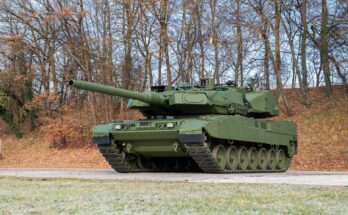The United States has announced that it reached an agreement with Saudi Arabia on the largest arms sale in history.
The White House announced on May 20, 2017 that it had finalized an agreement with Riyadh on an arms sale worth $110 billion initially and $350 billion over 10 years.
According to the statement,
“This package of defense equipment and services support the long-term security of Saudi Arabia and the Gulf region in the face of Iranian threats, while also bolstering the Kingdom’s ability to contribute to counter terrorism operations across the region, reducing the burden on the U.S. military to conduct those operations.”
In Saudi Arabia @POTUS has just completed largest single arms deal in US history, negotiating a package totaling more than $109.7 billion— Sean Spicer (@PressSec) May 20, 2017
U.S. firms have signed memorandums of understanding with Saudi officials during U.S. President Donald Trump’s visit to Saudi Arabia, which began on May 20.
Raytheon inked a deal to establish Raytheon Arabia, a firm based in Saudi Arabia that will implement local contracts.
Raytheon Chairman and CEO Thomas A. Kennedy said, “This strategic partnership is the next step in our over 50-year relationship in the Kingdom of Saudi Arabia and a strong indicator of our continued global growth.
“By working together, we can help build world-class defense and cyber capabilities in the Kingdom of Saudi Arabia,” he added.
Lockheed Martin pledged to build 150 Black Hawk helicopters in Saudi Arabia. The deal could be worth $6 billion and create 450 jobs in the kingdom. Moreover, the firm will produce four Littoral Combat Ships for the Saudi Navy.
A number of other systems are expected to be in the whole package of arms on offer (see update below).
All U.S. arms sales are subject to oversight by the U.S. Congress. While it is rare that the Congress blocks a sale outright, lawmakers last year sought unsuccessfully to block a $1.15 billion sale of M1A2S main battle tanks to Saudi Arabia.
It is unclear if U.S. lawmakers are similarly seeking to block this latest arms sale. Some American politicians have expressed opposition to the Trump Administration lifting a ban on the sale of precision guided munitions to Saudi Arabia, which was put in place by former president Barack Obama late last year.
Opposition to the sales generally stems from concern over the humanitarian situation in Yemen, where Saudi Arabia has led a coalition since March 2015. Human rights agencies accuse Saudi Arabia of committing war crimes in that conflict, which Saudi Arabia denies.
UPDATE: The State Department released a fact sheet on some of the systems involved in the sale (in general terms). They are:
- Border Security and Counter Terrorism: Capabilities such as aerostats, tanks, artillery, counter-mortar radars, armored personnel carriers, helicopters, and associated training that will enable Saudi Arabia to secure its borders against terrorist and other threats.
- Maritime and Coastal Security: Capabilities that will enable Saudi Arabia to defend freedom of navigation and to deter and defend against maritime attacks or incursions. Systems include Multi-Mission Surface Combatant ships, helicopters, patrol boats, and associated weapons systems.
- Air Force Modernization: Systems, sustainment, and training that will enable Saudi Arabia to maintain airborne surveillance, secure its airspace, and provide close air support with improved precision targeting capabilities and processes. Systems include transport, light close air support, intelligence-gathering aircraft, and continuing support for its existing platforms.
- Air and Missile Defense: Systems such as Patriot and THAAD that will help Saudi Arabia protect itself and the region from missile or other airborne attacks.
- Cybersecurity and Communications: Equipment that will modernize Saudi Arabia’s command and control networks across its military to improve its overall cohesion and operational effectiveness.
Military markets analyst, covering Eurasia, Middle East, and Africa.




